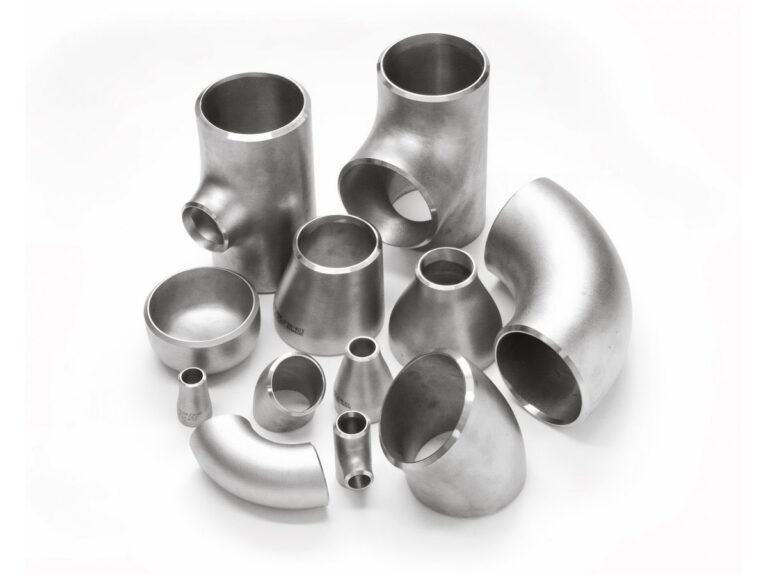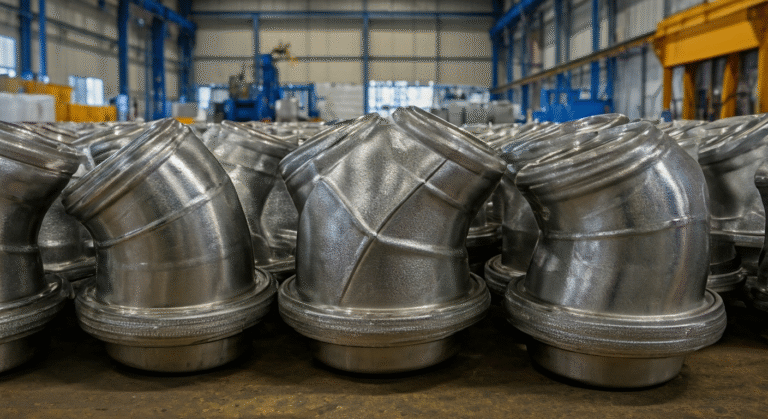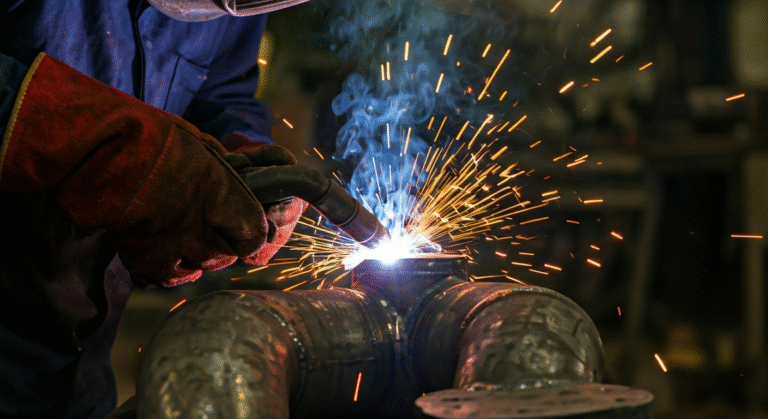-
Промышленная зона Иньчжуан, уезд Мэнцюнь, город Цанчжоу, провинция Хэбэй, Китай

Essential Guide to SO Flange for Industry Professionals

Основные моменты
- SO flange, or slip on flange, is a widely used type of pipe flange designed for easy installation and alignment. These steel pipe flanges are best suited for low-pressure applications in process plants, pipelines, and valve connections. Typically, SO flanges are used in situations where frequent dismantling or maintenance of pipelines is needed, such as in cooling water lines, fire-fighting systems, and utility pipework. Their design allows the flange to slide over the pipe and then be welded, making them ideal for connecting steel pipe flanges where space or alignment flexibility is important.
- These steel pipe flanges are best suited for low-pressure applications in process plants, pipelines, and valve connections.
- Pressure ratings for SO flanges range from Class 150 to Class 2500, ensuring flexibility for various piping system requirements. Key specifications to consider when selecting an SO flange include its dimensions (such as outside diameter, bolt circle diameter, and thickness), compatibility with the piping system, and the appropriate raised face option to ensure enhanced sealing when paired with a compatible gasket.
- Raised face options provide enhanced sealing when paired with a compatible gasket.
- SO flanges come in standard sizes from 1/2″ to 24″, with custom diameters available up to 60″.
- The choice of carbon steel, stainless steel, or alloy construction ensures durability and heat resistance based on specific industry needs.
Введение
For people who work in piping, the SO flange is a good and affordable choice to join pipes, valves, and other equipment. The flange face is made in a way that lets the flange slip over the pipe, making the job easier. This helps save on work and cuts down on issues with lining things up. If you work with steel pipe flanges, need to think about pressure ratings, or look at different kinds of flange faces, you should know about SO flanges. They help make safe and leak-free connections in many types of industrial work.
To properly install an SO flange, you should first slide the flange over the pipe, then align the flange face with the pipe end. After positioning, weld the flange to the pipe on both the inside and outside joints to ensure a secure fit. Tighten any necessary bolts and check alignment to make sure the connection is safe and leak-free. Proper installation involves steps like preparing the pipe end, accurate alignment, welding, and final inspection for tightness and safety.
Understanding SO Flange Fundamentals

The basics of SO flange design make it a top pick for many people who work in piping. The SO flange slides over a pipe as a slip on solution. You then weld it to make sure it stays in place. This makes the fitting speedy and you do not need to worry about lining up the end of the pipe exactly. It can work with ring type setups and both face types. This lets it be used for a lot of needs in the piping world.
You need to know why the SO flange stands out from other pipe flanges. How does slip on welding stack up against other styles? What does this mean when you put it in or need to fix it? Let’s look closer at these differences.
SO flanges are commonly manufactured from materials such as carbon steel, stainless steel, and alloy steel, each chosen for their strength, corrosion resistance, and suitability for specific applications. Selecting the right material depends on factors like the operating temperature and pressure, the type of fluid being transported, and the environment (including potential exposure to chemicals or moisture). For example, carbon steel is economical and widely used, but stainless steel offers better resistance to corrosion, making it ideal for more demanding or corrosive settings.
What Is an SO (Slip On) Flange?
An SO flange, also called a slip-on flange, is used with pipes. You slip the flange over the end of the pipe. This makes it easy to get the pipe in place the right way and helps with welding. Many people in different industries use slip-on flanges. They like them because the cost is not high and it is quick to install this flange.
How SO Flanges Differ from Other Pipe Flange Types
Slip on flanges are different from welding neck flanges. Welding neck flanges have full contact between the hub and the pipe. This gives them more durability and better pressure control than other types. Slip on (SO) flanges, however, are made for easy fitting and installation.
- SO flanges need two fillet welds. One goes inside, and one goes outside for a secure fit.
The flange bore is made to be bigger than the pipe diameter. This makes it easier to line up the pieces.
The pressure rating, such as Class 150, determines the maximum pressure the flange can safely handle. Higher pressure classes mean the flange is designed with thicker walls and may have a different flange bore and diameter to withstand greater stress. Choosing the correct pressure rating ensures the SO flange performs reliably in its intended application and remains suitable for the operating conditions.
- The flange bore is made to be bigger than the pipe diameter. This makes it easier to line up the pieces.
- You can get raised face and ring joint face options to match the sealing strength you need.
- SO flanges are usually less costly when you compare them to welding neck flange types.
- These flanges do not work as well for high-pressure or repeat bending situations, since they are not as strong.
With SO flanges, you get faster setup and lower costs. But you do not have the same pressure rating or long life as you do with full-contact welding neck flange designs. People in piping work have to look at these things and choose what is right for their job.
Applications and Uses of SO Flanges in Australia

SO flanges are very important in process plant applications and piping systems. They help join together valves, steel pipe flanges, and other fittings. Many people pick them because they work well in low-pressure conditions. These flanges also make it easy to install or change pipes when needed.
In Australia, many industries use slip on flanges because they can work with different types of pipe flanges. They fit well with materials like cast iron and stainless steel. This makes them useful in many cases where fluids need to move safely and without leaks, for both new and old pipes. They help keep the piping strong and help workers get the job done well.
Common Industrial Sectors Utilizing SO Flanges
SO flanges are used in many areas because they are very flexible. You can find these flanges in process plant applications, where they help join equipment and control how fluids move. The significance of flange face types—such as raised face, flat face, and ring-type joint—for SO flanges lies in how they influence sealing performance and compatibility with connecting equipment. Raised face is often used for improved sealing in high-pressure environments, flat face is suited for low-pressure applications where alignment and contact surface are important, and ring-type joint is used in critical settings where leak prevention is crucial.
Industrial sectors where SO flanges are common include:
Oil and gas infrastructure: SO flanges help connect piping, casing, and valves.
Water treatment facilities: Cast iron flange setups work well for chemical and water pipelines.
The main differences between an SO flange (slip-on flange) and a weld neck flange are in their design and installation methods. SO flanges are slipped over the end of a pipeline and then fillet welded in place, making them easier and faster to install, often used in lower-pressure applications. In contrast, weld neck flanges have a long neck that is butt-welded to the pipe, providing greater strength and resistance to pressure, which makes them suitable for high-pressure environments. Both flange types are used to connect piping and valves, but the selection depends on the requirements of pipelines and the industrial sector.
- Oil and gas infrastructure: SO flanges help connect piping, casing, and valves.
- Water treatment facilities: Cast iron flange setups work well for chemical and water pipelines.
- Chemical processing: Steel pipe flanges keep process lines and reactors safe and secure.
Power plants: You can fit pipelines with SO flanges for cooling and steam systems.
Manufacturing: SO flanges handle low-pressure air, gases, or liquids.
SO flanges are manufactured according to standards such as ANSI B16.5 and ASTM A105, which specify requirements for dimensions, materials, and pressure ratings. These standards are important because they ensure that pipe flanges meet safety, reliability, and compatibility requirements needed for use in pipelines across diverse industrial sectors.
- Power plants: You can fit pipelines with SO flanges for cooling and steam systems.
- Manufacturing: SO flanges handle low-pressure air, gases, or liquids.
SO flanges fit easily, so engineers and maintenance teams like to use them. They also help save money. You can use SO flanges with many pipe materials and flange face styles, so they stay useful as the industry changes.
Typical Piping System Scenarios for SO Flange Installation
SO flanges work well for low pressure pipelines. They make it easy to join pipes, especially in places where you need to take things apart or carry out maintenance often. The way they slip onto the pipe helps with welding and makes aligning the pieces less of a job. This is very helpful with big diameter piping setups.
You often find SO flanges at the ends of pipelines, on valve connections, or near the equipment nozzles. The flange bore is a bit bigger than the pipe diameter, so putting the pipe in goes smooth and you get fewer problems with alignment. Welding both at the top and at the bottom of the flange makes it tighter and helps stop leaks, even if there is some pressure in the system.
SO flanges are popular in industrial piping due to their ease of installation and good leak prevention, especially in lower-pressure scenarios. Compared to other flange types, they offer advantages such as easier alignment and quicker assembly, thanks to their slip-on design. However, the main disadvantage is that SO flanges are generally not suitable for very high-pressure or high-temperature conditions, as other flanges like weld neck or socket weld types provide more strength and durability for these demanding applications.
If your work needs you to change parts a lot or there are lower mechanical demands, SO flanges make the job easier. Their build saves time and cuts costs during installation. At the same time, you still get good sealing for many types of industrial piping and pipelines.
Key Specifications and Dimensions of SO Flanges
Choosing the right SO flange is about knowing about standard sizes, pressure ratings, and ASME rules. You have many choices for diameters. These flanges work well in both small and big piping jobs. You need to think about things like raised face options and how the gasket fits. These details help you get leak-free use.
Pressure ratings come in classes, for example, Class 150 or Class 300. These classes show if an SO flange is a good fit for your piping needs. If you know about these ratings, you will pick the flange that works best for your job every time.
Standard Sizes and Pressure Ratings Explained
SO flanges are manufactured in standard sizes to address the diverse needs of industrial piping. Common outer diameters range from 1/2 inch up to 24 inches, with custom options available up to 60 inches for special projects. Pressure ratings are expressed in Class (lb) or PN units, reflecting the maximum allowable pressure at given temperatures.
Here’s a handy reference table:
Nominal Pipe Size | Common Outer Diameter | Pressure Class (lb) | PN Rating |
|---|---|---|---|
1/2″ | ~3.5″ | 150, 300, 600, 900 | PN 10-40 |
2″ | ~6″ | 150, 300, 600, 900 | PN 10-64 |
4″ | ~9″ | 150, 300, 600, 900 | PN 10-64 |
12″ | ~20.5″ | 150, 300, 600, 900 | PN 10-64 |
24″ | ~32″ | 150, 300, 600, 900 | PN 10-64 |
The choice of pressure class, such as Class 150, determines the flange’s performance under operating conditions. Higher ratings allow use in more demanding environments.
Important Dimensional Considerations When Selecting SO Flanges
Choosing the right flange is about making sure the flange bore, inner diameter, and overall diameter fit with the piping details. It is important to check things like gasket size and the face type, too. These all help make the fit tight and stop leaks.
Key things you need to look at include:
- The flange bore should be the same size as the pipe’s outer diameter. This helps the flange slide on smoothly.
- The tolerance in the inner diameter can affect how easy it is to install and weld the flange.
- The flange face design, such as raised face or ring type, will tell you what gasket you need and how well it seals.
- Be sure the gasket size and material work with the flange and the system.
- Check that the bolt hole pattern matches the standard. This helps when you need to fasten the flange firmly to the piping.
When you look at these size and fit details, you can be sure the flange will work well. This helps the SO flange install easily and makes the piping system dependable in every use.
Materials and Construction of SO Flanges
SO flanges are made in many different materials. These include carbon steel, stainless steel, and different kinds of alloy. Choosing the right material is important. It helps with heat treatment, durability, and how well the flange can deal with things like weather or strong chemicals.
The conditions where the flange will be used matter a lot. For example, if the area has high temperatures or pipelines with strong or harmful substances, you need to pick your material carefully.
Knowing the properties of these materials and the difference between casting and forging is important for choosing a flange. This helps engineers pick the best one for good long-term use and to save money.
Popular Material Choices (Carbon Steel, Stainless, Alloy)
The type of material used to make flanges affects how well they work and how long they last. Carbon steel flanges are known to be strong. They also do not cost too much. People like to use these in low-pressure piping systems. But stainless steel flanges do better when it comes to stopping rust. They are often used in process plant applications and work well in places where things get rough. Alloy flanges give you more features. They work the best when temperatures and pressures are very high. That makes them a good pick for tough piping situations where durability matters.
Selecting Materials Based on Industry Requirements
Choosing the right material for your flange is important so it matches what the process plant needs. If you have low temperatures or want more durability, go with stainless steel or alloy flanges. Both handle the cold well and last longer. In everyday pipelines, people often pick carbon steel. The cost is lower, and you get good performance.
When pipelines carry things that can cause rust or break down the pipe, stainless steel helps protect against this. For pipes dealing with high pressure or heat changes, alloy flanges work best. You can also use heat treatment to make sure the system is safe and runs well.
Every industry has what it looks for. The oil and gas sector cares about toughness. Water treatment plants want flanges that last a long time. If you look at the needs for your process plant applications, you can pick a SO flange that gives the right durability and safety. This helps the pipelines work well for a long time.
Заключение
To sum up, it’s very important to know about SO flanges if you work with piping systems. These flanges can be used in many areas, and that shows why they are key for keeping the system strong and working well. When you understand their details, what they are made of, and how they are made, you make better choices for your projects. If you work in construction, making things, or any other kind of industry, knowing more about SO flanges helps you do your job better and improves your work. If you have questions about SO flanges or need help and want to know more, you can reach out to our team. We are here to give you expert advice.
Часто задаваемые вопросы
What is the significance of flange face types for SO flanges?
Flange face types include raised face, flat face, and RTJ. The flange face you pick matters because it affects how the gasket works and seals the joint. Raised face flanges be used when you want better sealing. Flat face flanges are good for low-pressure jobs. RTJ flanges use gasket grooves to stop leaks. These be best for high pressure systems.
What are the major differences between SO flanges and weld neck flanges?
SO flanges use fillet welds. These flanges have a bigger hole that helps with easy installation. But they are not as strong or long-lasting as other types.
Weld neck flanges have a hub that is tapered and a groove. They use full welding. This gives them more strength and better durability. They are the best choice when you need strong welding for high pressure and when there is a lot of bending time after time.
Which standards govern the production and certification of SO flanges in Australia?
SO flanges in Australia need to follow standards like ASME B16.5, ANSI, DIN, and ASTM (like ASTM A105 and ASTM A182) for certification. These standards show the right size, pressure ratings, what they are made of, and how well they are made. This helps make sure they be safe and work well when used in industrial piping.
Can your flange size decrease? : r/ExclusivelyPumping
Yes, flange size can decrease due to various factors such as weight loss or changes in breast tissue. It’s essential to regularly assess your flange fit for optimal comfort and efficiency while pumping. Using the correct SO flange size ensures effective milk expression and minimizes discomfort during the process.


